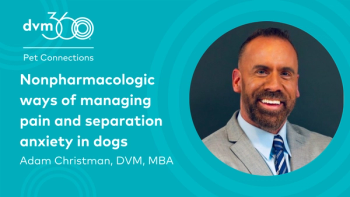
Educate your team-and yourself-about the dangers of formaldehyde
It's one of the most common chemicals in use today, but you'll need to take precautions before exposing your team members to formaldehyde.
You should always use caution when working with chemicals in your veterinary practice, but that's especially true when using formaldehyde for tissue preservation. Studies indicate that formaldehyde is a human carcinogen and is therefore a serious hazard for workers. Here's a look at how to protect your team members.
To protect workers, OSHA has implemented a safety standard that applies to any U.S. workplace that uses formaldehyde. This standard states that the permissible exposure limit for formaldehyde in the workplace is 0.5 parts per million (ppm) measured as an eight-hour time-weighted average. This standard also includes a 2 ppm short-term exposure limit.
This means that for short periods (up to 15 minutes in an eight-hour workday), small formaldehyde exposures are unlikely to cause damage. But if team members are exposed for longer durations, the potential for complications is much higher.
THE RISKS FOR EMPLOYEES
Team members exposed to fumes from formaldehyde in concentrations above 0.1 ppm can experience irritation of the eyes, nose, and throat. The severity increases as concentrations rise, and at 100 ppm, it can be life-threatening.
To guard against this, the OSHA regulation requires that every workplace conduct initial testing to identify which employees are exposed to formaldehyde and at what concentration. If the test reveals levels below the 2 ppm short-term exposure limit, further monitoring is not required unless there's a change that could affect exposure levels.
CONTROLS TO CONSIDER
Anytime team members are exposed to formaldehyde, OSHA requires that you follow certain controls. These controls fall into one of three categories: engineering controls, procedural controls, and personal protective equipment:
> Engineering controls are mechanical or design features that reduce or remove the hazard in advance. Examples include an exhaust hood or a fan over the area where formaldehyde is handled.
> Procedural controls are the steps team members must follow for quality control, safety, or simply for workflow. This could be a step-by-step operating procedure for mixing and handling formaldehyde.
> If engineering controls and procedural controls are unsuccessful in reducing employee exposure, practice owners must require personal protective equipment, such as respirators, to reduce exposure.
IT'S NOT TOO LATE TO EDUCATE
Employees exposed to formaldehyde concentrations of 0.1 ppm or greater must receive training on the symptoms and health effects of formaldehyde and how to report suspected overexposure. This can be as simple as writing a memo or a brief instructional guide. Keep a record of any training you conduct and any complaints you receive.
OSHA also requires you to keep a written exposure control plan on file. This plan should address the nature of formaldehyde use in your practice, the team members responsible for ensuring that engineering and procedural steps are followed, and the procedures to be followed in the event of a spill.
Phil Seibert, CVT, is an author, speaker, and consultant with SafetyVet in Calhoun, Tenn. Send questions or comments to
Newsletter
From exam room tips to practice management insights, get trusted veterinary news delivered straight to your inbox—subscribe to dvm360.




